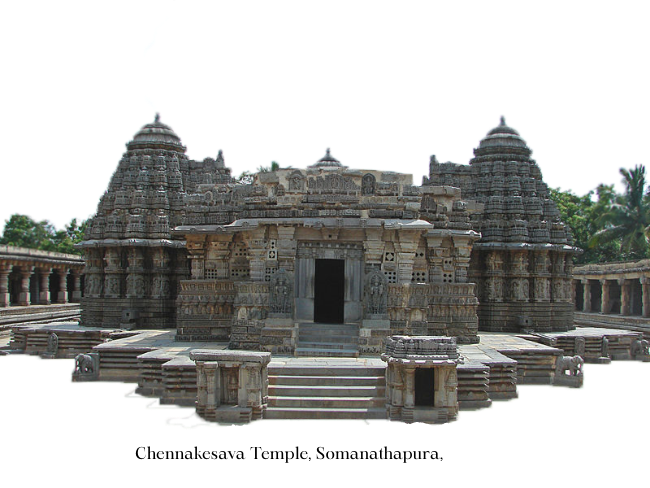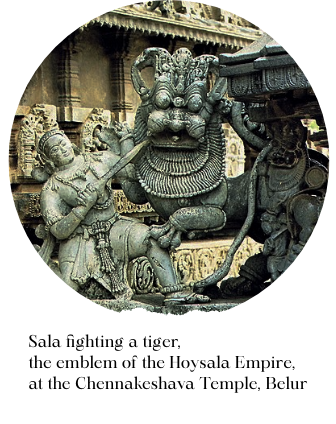Pictures
Sagredo at en.wikipedia, CC BY-SA 3.0
Dineshkannambadi at the English-language Wikipedia, CC BY-SA 3.0
Dineshkannambadi, CC BY-SA 3.0
There were two types of officials: the first one was the proto-bureaucratic exercised power in the locality; the centre selected the second one. The Governors and officials were divided into the following grades:
The Highest Grade -
Certain officials in some local governments fell into three categories - Dandanayakas, Maha-pradhanas, and Nayakas
In The Districts -
In The Centre - These officers would complete a regular cursus honorum, by which they would receive their career titles as below.
Narasimha II created more positions for Raya-Dandanathas or royal colonels, bestowing them with the title of Kumara.

According to the king's wishes, land-holders were expected to provide for the defence of their holdings against robbers and dacoits or to protect the land from the invasion of hostile kings. There was an excellent central land registry system in which transfers of land, excluding mortgages, were registered after following certain terms and considerations. Such a record must have helped in boundary and inheritance issues between people. The king would settle disputes over ownership of real property apart from inheritance. The king had at his disposal large areas of land which had not already been awarded to public servants, and he formed it into Agraharas or bestowed upon temples, and he had in his gift offices from that of Gauda, the village headman.
The primary source of income was agriculture or productivity of the soil since the land was in his possession. If the land were in possession of a minister, the King would receive a proportion of the produce unless he granted it rent-free. Apart from the regular land revenue, revenue would be generated from the treasure from the King's private lands, buried treasure, gold jewels, and iron mines, fines and escheat of inheritances, customs, and excise dues. Whatever remained from all the regular expenditure would be used to encourage art and for building temples, tanks, forts, palaces, and city walls. However, with an increase in government expenditure, there would be additional tax in the form of permanent settlement, which was the basis of the revenue settlement.

Civil justice was a complicated science in which the King of his deputies were the highest executive officers. The intricacies of the legal system were memorized and learnt by the Brahman community consisting of men who had spent their lifetime studying abstract law and systemisation of the local customs. These learned men usually assisted the king or the Dharmadhikari (Minister of Justice) to ensure justice was delivered. There are numerous references to disputes and settlements which shows that the judicial system was proper and organized during this period. The king was the final Court of Appeal. The actual decision of disputes was taken by arbitrators appointed by the king or his deputy, to the king's representative in the district, to a caste assembly, to a joint assembly of caste dignitaries, pandits, heads of orders and merchant princes.
